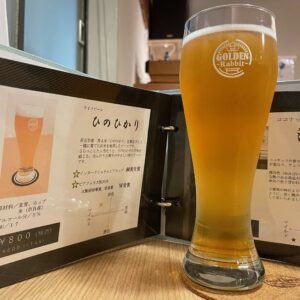034 My favorite sound.
< English is below >
ここはJR参宮線の鳥羽駅。
先ほど近鉄特急「しまかぜ」に乗って到着したばかりですが、早速名古屋に向かっての移動を進めます。
This is Toba Station on the JR Sangu Line.
I just arrived on the Kintetsu Limited Express “Shimakaze”, but I will move to Nagoya immediately.

☆
鳥羽から名古屋へは伊勢湾の西側を、近鉄線と並走しながら進みます。
From Toba to Nagoya, proceed along the west side of Ise Bay, running in parallel with the Kintetsu Line.

鳥羽から名古屋まで、JRと近鉄の比較をしてみましょう。
①JR快速・みえ14号
鳥羽13:07発 ▶️ 名古屋15:06着(1時間59分/2,500円)
②近鉄線(特急利用)
鳥羽13:02発 ▶️ 名古屋14:37着(1時間35分/3,090円)
③近鉄線(急行利用)
鳥羽13:25発 ▶️ 名古屋15:45着(2時間20分/1,750円)
スピード重視なら近鉄線特急利用、コスト重視なら近鉄線急行利用ですね。
利用者のニーズもハッキリしており、今回乗車した快速「みえ」は、およそ1時間に1本の運行、そして車両も2両編成のコンパクトサイズです。
ですが、今回の私のお目当ては、JRの快速「みえ」なのです。
Let’s compare JR and Kintetsu from Toba to Nagoya.
① JR Rapid Mie No. 14
Toba 13:07 departure ▶️ Nagoya 15:06 arrival (1 hour 59 minutes / 2,500 yen)
② Kintetsu line (Limited Express use)
Toba 13:02 departure ▶️ Nagoya 14:37 arrival (1 hour 35 minutes / 3,090 yen)
③ Kintetsu line (Express use)
Toba 13:25 departure ▶️ Nagoya 15:45 arrival (2 hours 20 minutes / 1,750 yen)
If speed is important, use the Kintetsu Line Limited Express, and if cost is important, use the Kintetsu Line Express.
The needs of the users are also clear, and the Rapid “Mie” that I got on this time runs about once an hour, and the vehicle is also a compact size with two cars.
However, my aim this time is JR’s Rapid “Mie”.
☆

ホームにはキハ75の2両編成が停車しています。
JR東海のスタンダードな前面デザインです。
A 2-car train of Kiha 75 is parked at the platform.
It is a standard front design of JR Central.
☆
出発のシーンです。
スマートな風貌のキハ75ですが、スタートは力強いながらも、パワーには余裕のある滑り出しです。
This is the departure scene.
Although Kiha 75 has a smart appearance, it has a strong start, but it is a start with plenty of power.
鳥羽駅出発後は、しばらく近鉄線と並走し、その後海沿いを少し走行し、紀勢本線との合流駅・多気に到着です。
走行シーンにも映っていましたが、この列車が走ってきた参宮線に紀勢本線が合流する線路配置になっています。
山岳地帯を超え、紀伊半島を一周する紀勢本線よりも早く、伊勢神宮への参拝者を運ぶ参宮線が開業していたことが、ここからもわかります。
参宮線開通:1893年一部開業。
紀勢線開通:1923年一部開業。
After departing from Toba Station, we will run in parallel with the Kintetsu Line for a while, then run a little along the sea, and arrive at the confluence station with the Kisei Main Line, Taki.
As it was reflected in the driving scene, the track layout is such that the Kisei Main Line joins the Sangu Line where this train was running.
It can be seen from this that the Sangu Line, which carries worshipers to Ise Jingu, was opened earlier than the Kisei Main Line, which crosses the mountainous area and goes around the Kii Peninsula.
Sangu Line opened: Partially opened in 1893.
Kisei Line opened: Partially opened in 1923.
☆
次の動画は木曽三川を渡る付近からです。
列車は順に、揖斐川、長良川、そして木曽川と渡っていきます。
高速走行で、安定したエンジン音が響きます。
先ほどの鳥羽駅出発時も、そしてこの高速運転時も、ディーゼルエンジンの走行音がとても心地よく響いています。
The next video is from the vicinity of crossing the Kiso Three Rivers.
The train crosses the Ibi River, the Nagara River, and the Kiso River in order.
At high speeds, a stable engine sound is heard.
The running sounds of the diesel engine echoes very comfortably both when departing from Toba Station and during this high-speed operation.
☆

名古屋駅に到着です。
近年はJR各線の電化も進み、このようなディーゼルエンジン搭載車の活躍の場が減少しており、私個人としては、少し寂しい気もしています。
これからも可能な限りディーゼルカーを追って、レポートしていきたいと思います。
Arrived at Nagoya station.
In recent years, the electrification of JR lines has progressed, and the number of places where such diesel engine-equipped vehicles are active is decreasing, and I personally feel a little lonely.
I would like to continue to follow and report on diesel cars as much as possible.
☆
ご拝読、有難うございました。
またのお越しを、お待ちしています。
Thank you for your reading this post.
I’m looking forward to your next visit.

